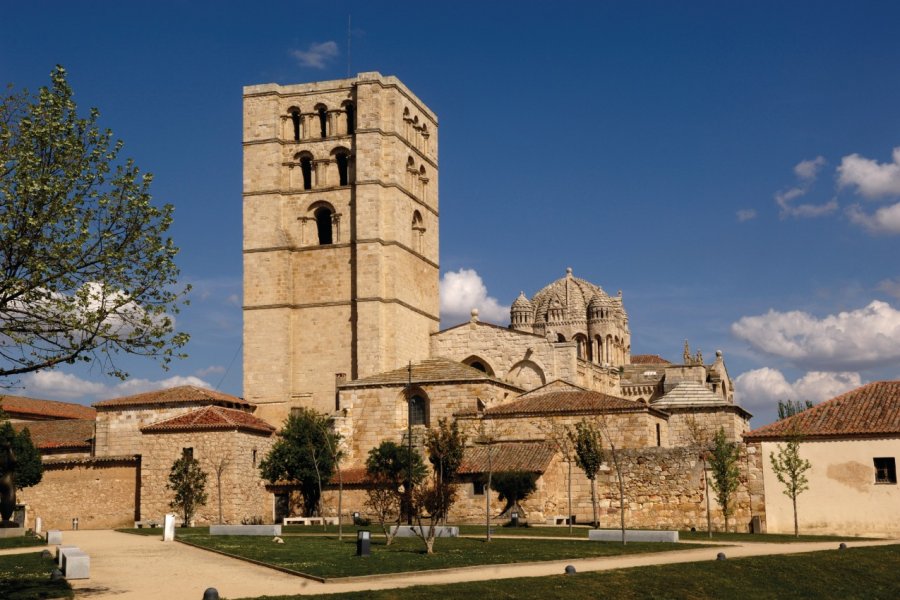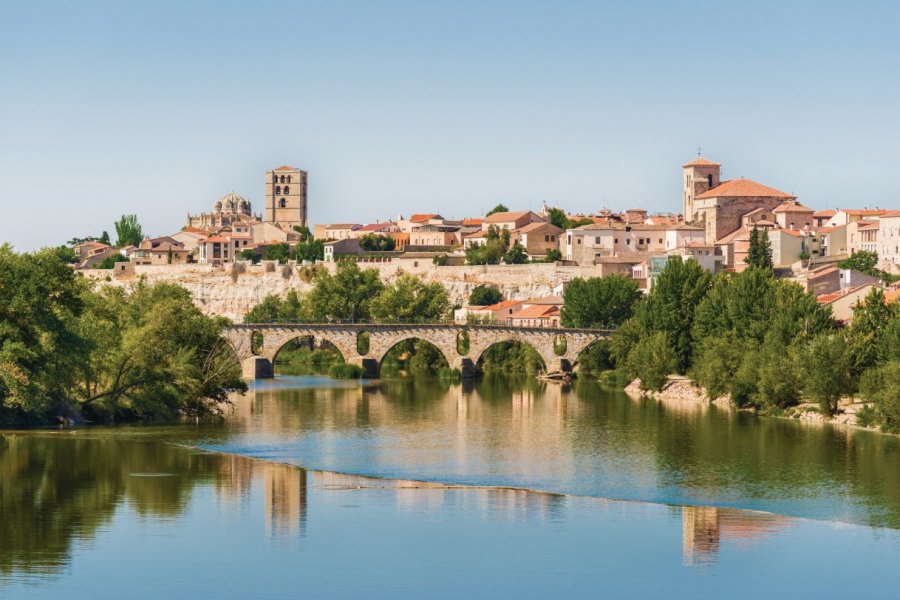Travel Guide Zamora
Find an accommodation
Advertising
Nestled on a strategic promontory, this provincial capital appears in Antonino's itinerary as Ocellom Durii (the eyes of the Duero). Later called Samurah by the Arabs, it became a decisive stronghold during the three centuries of the Reconquest, a frontier position that led to its destruction and later restoration in 1061, under Ferdinand I. It will know then its golden age which will give him its urban structure with its churches and Romanic monuments. Of its three fortified enclosures of the 13th century, it preserves its castle and several parts of its first wall. Its Holy Week is one of the most important in Spain. If you don't have much time, the cathedral and the castle of Zamora will be the two must-sees. But the visit should also allow you to admire the impressive string of Romanesque churches, the largest in Spain, including the church of San Isidro, near the cathedral, the church of San Pedro and San Ildefonso or the church of the Magdalena, whose facade is one of the most decorated and where justice was administered in the Middle Ages. And as you stroll through the city, you will discover the sculptures of Baltazar Lobo, a local artist. The Plaza Mayor and Calle Herreros are the nerve center of the old quarter
What to visit Zamora?
Advertising
Weather at the moment
Advertising
Organize your trip with our partners Zamora
Transportation
Book your plane tickets
Car Rental
Boat rental
Accommodation & stays
Find a hotel
Holiday rental
Find your campsite
Tailor-made trip
Immersion travel
Services / On site
Activities & visits
Find a doctor

















